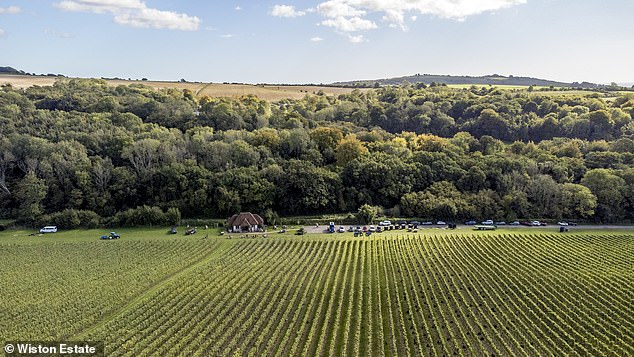From the top of the hill, vines cascade down the slopes to the waters of the River Cuckmere, which meanders between chalk cliffs to the sea. The vines to our right are covered in netting, to protect them from hungry crows, but those to our left are exposed.
“They are Chardonnay grapes,” explains our guide. “Birds don’t touch them. Neither do badgers. They only like Pinot Precoce.”
That birds and beasts are connoisseurs of fine wine is an insight, one of many about this emerging UK wine region, gleaned on a visit to Rathfinny Wine Estate in East Sussex.
We will be undertaking a new five-day walking and wine tour, covering 82 kilometres in the shelter of the South Downs, through an undulating landscape and an area rich in history and culture.
The route begins in Arundel, with its imposing Norman castle. The Romans are often cited as having brought the vine to Britain, but the French, lovers of the good life, also established viticulture after the Norman Conquest. The Domesday Book records 40 vineyards in the south-east; today there are more than 100 in Sussex alone.
Lizzie Enfield joins an 82-kilometre walking and wine tour of England’s South Downs, stopping at several vineyards including Wiston Estate (pictured above)
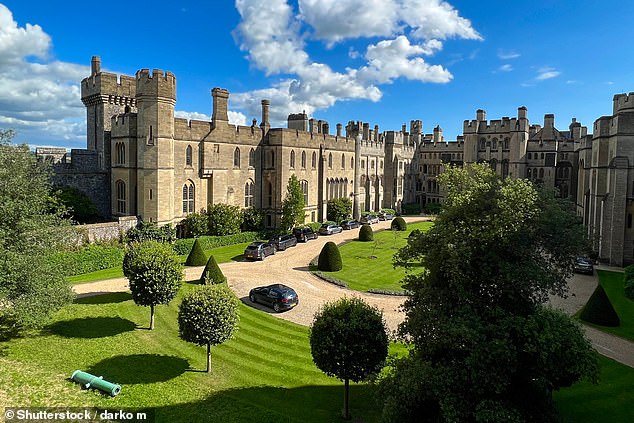
Lizzie says: “The route starts in Arundel, with its imposing Norman castle (pictured). It is often said that the Romans brought the vine to Britain, but the French, lovers of the good life, also established viticulture after the Norman Conquest.”
The first vineyard on our route is Wiston, five miles north of Worthing. The land here has been in the Goring family since the mid-18th century, but it was in the early 2000s that the latest generation planted Pinot Noir, Pinot Meunier and Chardonnay vines and began producing premium Sussex sparkling wines.
In the tasting rooms at Flint Barn, we sipped a rosé, a brut and an award-winning Blanc de Blancs, with notes of apple, strawberry, cherry and even damson, flavours reminiscent of the area 30 or 40 years ago, when orchards flourished and berries ripened in areas now covered with vines.
It wasn’t warm enough for grapes back then, but global warming has meant that southern England now has a climate similar to that of the Champagne region in the 1970s, leading to a boom in wine production.
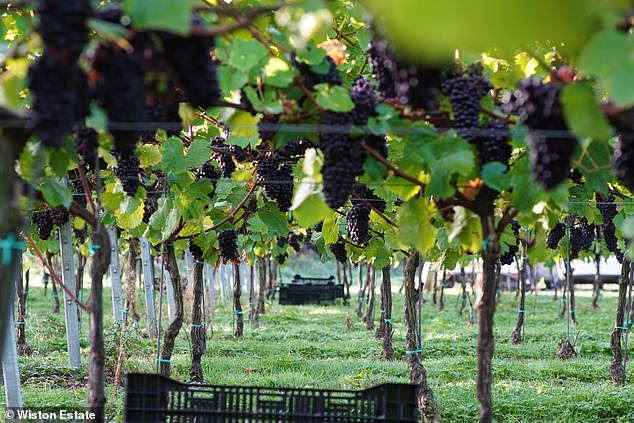
Lizzie tries a rosé and brut wine at Wiston Estate (pictured) and smells “notes of apple, strawberries, cherries and even damson”
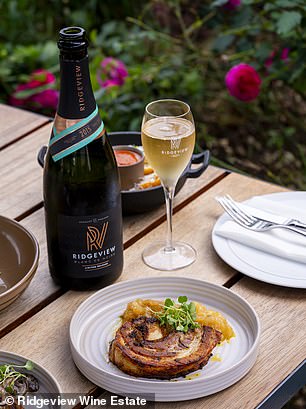
Lizzie says: ‘We headed to the Ridgeview Estate (pictured) and sampled a sparkling Blanc de Blancs that is served at state banquets for the likes of Barack Obama and Chinese President Xi Jinping.’
Sussex even has Protected Designation of Origin status for its sparkling wine, which has caused some discord with its neighbour Kent.
Because many of the vineyards and wineries are concentrated in a relatively small area, a new type of winery tour has emerged: on foot.
Many estates have their own wine tours, which sometimes lead to other nearby vineyards, but Mac’s Adventure is the first company to create a longer tour through the heart of Sussex wine country.
From the tree-lined Iron Age fort of Chanctonbury Ring on the ridge above Wiston, we follow the route taken by Charles II when he fled Parliamentary troops en route to France, arriving for the night in the quiet village of Bramber.
The next day we climb steadily to the edge of the legendary glacial abyss, Devil’s Dyke, with a view that landscape painter John Constable described as “the greatest in the world.”
From here we follow the South Downs Way before passing the black and white Jack and Jill windmills to the picturesque village of Ditchling.
With its Tudor timber-framed buildings, 12th-century church and Arts and Crafts museum, Ditchling was once known as the birthplace of sculptor Eric Gill. But since his fall from grace, its four vineyards, all within a stone’s throw of each other, have become a major draw.
We head to the Ridgeview Estate and sample a sparkling Blanc de Blancs served at state banquets for the likes of Barack Obama and Chinese President Xi Jinping.
Pleasantly sleepy after a few generously filled drinks, we head to our hotel, where our luggage, transported daily, awaits us.
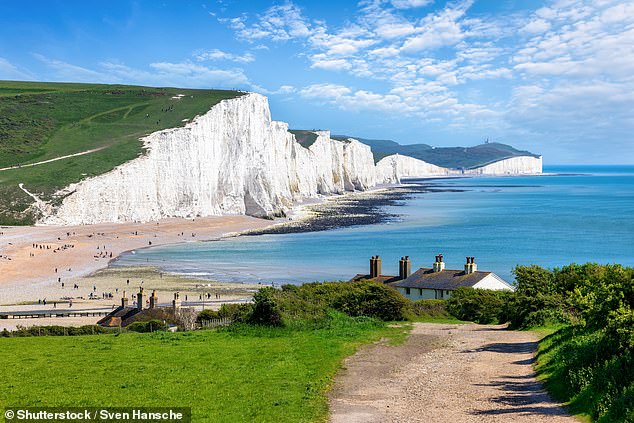
Lizzie says: ‘Our final day’s walk from the elegant 19th-century colonial-style Wingrove House in Alfriston takes us along the dramatic chalk cliffs of the Seven Sisters (above).’
Accommodation is a mix of hotels and guest houses, all conveniently located close to the route. Our final day’s walk from the elegant 19th-century colonial-style Wingrove House in Alfriston takes us along the dramatic chalk cliffs of the Seven Sisters.
This limestone, the bedrock of the area, is one of the keys to the success of Sussex wine. It retains water, allowing the vines to flourish without needing much irrigation.
So it is fitting that the bottle of Rathfinny we smuggle into our room at the Grand Hotel in Eastbourne on our last night has the Seven Sisters on the label. My partner thinks I am suggestible, but I say I have developed the nose of a badger, and as we gaze out to sea and toast the end of the journey, I can clearly taste the landscape we have been walking through.
It’s all there in the Champagne glass, with its hint of salinity and notes of honeysuckle, apples and pears – another taste of the Sussex wine region that requires very little effort to enjoy.
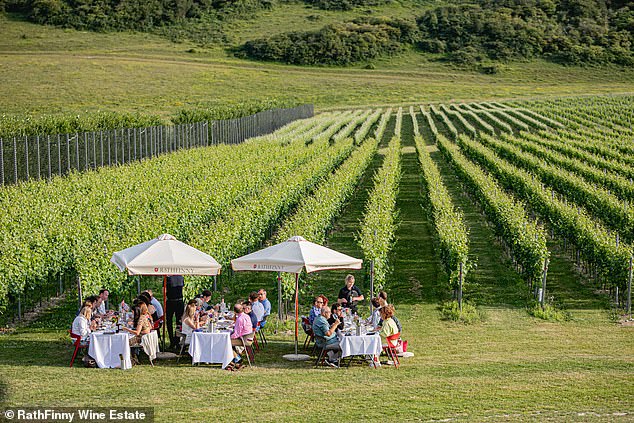
Guests dine amongst the vines at Rathfinny Vineyard (pictured). Lizzie says: “I can definitely taste the scenery we’ve been walking through.”

